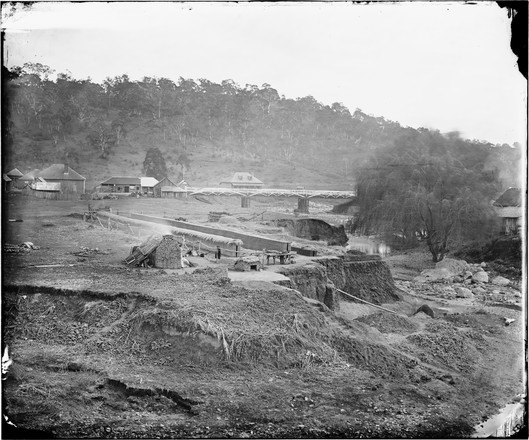
Brick-making on the banks of the river at Carcoar, looking south
1873
Glass photonegative
Glass photonegative
This is probably the temporary works of itinerant brickmakers George and William Wood on the banks of the Belubula River. Hand-made bricks were still made in rural Australia into the twentieth century. The brickmaker stood at the moulding table for 12 to 14 hours a day and with the help of assistants could make 3500 to 5000 bricks in a day from clay quarried nearby. The moulded bricks were left to dry in an area called a ‘hack’ or ‘hackstead’ and the bricks were covered with straw to protect them from rain or harsh sun. After two weeks, the bricks could be fired.


 Back to list
Back to list